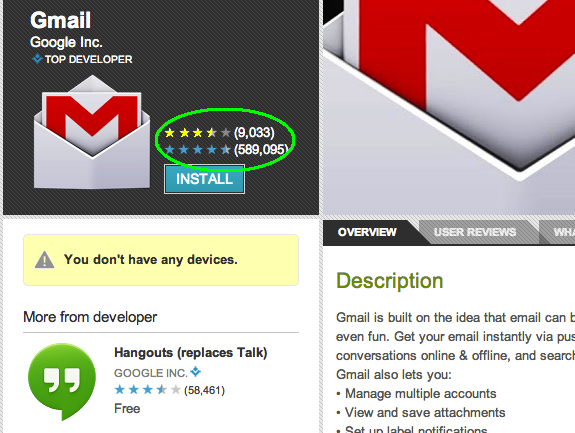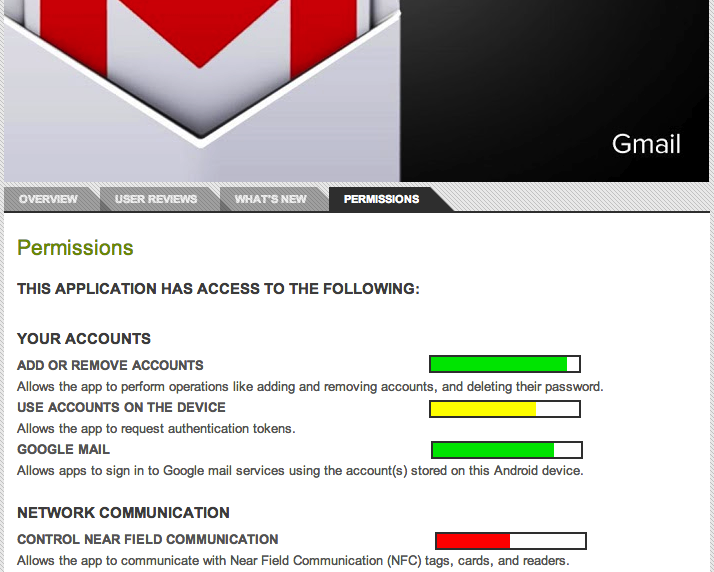Social Ratings of Application Permissions (Part 4: The Goal)
Tags: Android, Permissions, Security, User Studies
Posted on 31 May 2013.(This is the fourth post in our series on Android application permissions. Click through for Part 1, Part 2, and Part 3.)
In this, the final post in our application permissions series, we'll discuss our trajectory for this research. Ultimately, we want to enable users to make informed decisions about the apps they install on their smartphones. Unfortunately, informed consent becomes difficult when you are asking users to make decisions in an area in which they have little expertise. Rating systems allow users to rely on the collective expertise of other users.
We intend to integrate permission ratings in to the app store in much the same way that functionality ratings are already there. This allows users to use visual cues they are already familiar with, such as the star rating that appears on the app page.

We may also wish to convey to users how each individual permission is rated. This finer-grained information gives users the ability to make decisions in line with their own priorities. For example, if users are particularly concerned about the integrity of their email accounts, an app that has a low-rated email access permission may be unacceptable to a user, even if the app receives otherwise high scores for permissions. We can again leverage well-known visual cues to convey this information, perhaps with meters similar to password meters, as seen in the mock-up image below.

There are a variety of other features we may want to incorporate into a permission rating system: allowing users to select favorite or trusted raters could enable them to rely on a particularly savvy relative or friend. Additionally, users could build a privacy profile, and view ratings only from like-minded users. Side-by-side comparisons of different apps' permissions rating could let users choose between similar apps more easily.
Giving users an easy way to investigate app permissions will allow them to make privacy a part of their decision-making process without requiring extra work or research on their part. This will improve the overall security of using a smartphone (or other permission-rich device), leaving users less vulnerable to unintended sharing of their personal data.
There's more! Click through to read Part 1, Part 2, and Part 3of the series!